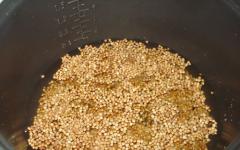Let's start with the fact that it is recommended to seat girls on their own no earlier than six months of age. By six months, the back and abdominal muscles of the baby are considered strong enough to withstand such a load.
According to pediatricians, normally developing six-month-old girls are able to sit with adult support. By the age of seven months, they can already hold their back upright on their own. By eight, the crumbs confidently sit down from a prone position or on all fours without the help of their parents. However, deviations of 1-1.5 months are considered quite acceptable.
But what if a four-month-old baby independently takes a sitting position during exercises or games? Do not interfere with her in this, so as not to slow down the natural course of development. Let the girl remain in this position for a short time. After 10 minutes, you can distract the baby with a toy or take it in your arms. The main thing is to ensure that during the day the baby sits for no more than 60 minutes.
Of course, parents should do everything possible to protect the child from accidental falls. After all, at first the baby will not sit too confidently, periodically falling on her side. You don't need to worry about this. Very soon, the girl's muscles will get stronger, and she will be able to keep her back straight. Up to this point, it is not recommended to cover the baby with rollers or pillows, as many parents like to do. Otherwise, the upright baby simply will not be able to take a more comfortable position in case of fatigue.
How to plant girls
To begin with, when sitting down a girl for the first time, you should not use pillows and rollers as a support. The baby must independently learn to keep the back straight. Therefore, it is better to start slowly planting the child on your lap, slightly supporting her. In order for the baby to quickly learn to take a vertical position, it is necessary to regularly perform a number of simple exercises with it. Before starting classes, you should lay the baby on a hard, flat surface, whether it be the floor or a changing table.
Exercises
- Put the girl on her tummy so that she rests her legs against the body of an adult. Raise the baby, holding her with one hand under the chest and with the other under the shins. The buttocks and back of the child should be tense. After a few seconds, return the baby to its original position and repeat the exercise again.
- Regularly arrange air baths for the baby, laying her on her tummy and placing a bright object in the visibility zone. The baby will make attempts to reach him. This will help strengthen the muscles of the back and prepare for a sitting posture. You can also hang small rings over the baby's crib, which the girl will try to grab onto. If she succeeds, the baby will be able to sit down with their help. Of course, success will not come the first time, but over time, progress will become apparent.
- Extend your index fingers to the baby lying on the back. Grasping them, the baby will begin to pull up. The back of the girl will come off the surface, and the abdominal muscles will come into tension. In a semi-sitting position, the baby should spend about 20 seconds. Then you need to return it to a horizontal position again.
Komarovsky Evgeny Olegovich, pediatrician: “When a child sits on his arm, you need to support his armpits with your other hand and press him to yourself. Then there will be no vertical load on the spine. If you want your child to learn to sit faster, encourage the crawling process in every possible way. Lay it on the floor on your stomach, place a large bright ball nearby and let the baby try to get to the object. The child crawls, strengthens the back muscles and then sitting will not be a problem for him.”
What will happen if you start to plant girls ahead of schedule?
Any experienced pediatrician can dispel doubts about the early sitting down of girls. Assessing the physical development of the crumbs, the doctor will give useful tips and recommendations. If the baby is ready for a change of position, parents should provide her with all possible assistance in mastering a new skill. As for early sitting down, it can harm the health of the crumbs and negatively affect her posture. After all, as mentioned above, staying in an upright position is a serious burden for fragile muscles. Children's orthopedists have long identified a direct link between early seating and scoliosis.
Another unpleasant consequence of anticipating events can be the deformation of the pelvic bones. Often, it causes problems in labor, making the process of the birth of a baby very long and painful. This is due to the fact that the pelvic bones simply block the paths along which the child must pass. In addition, early sitting down can negatively affect the psycho-emotional state of the child. After all, being in an unusual position, the baby can feel uncertainty and fear. As for the bending of the uterus, which allegedly occurs in girls due to the early planting of girls on the ass, this is just a myth.
Where else can you put girls? How many months?
Today, there are many devices in which the child can sit with support or support. However, they can be used from a certain age. Let us dwell in more detail on the question of where and when girls can be dropped off.
The walker
Let's start with the fact that pediatricians oppose the use of this accessory. After all, when moving in it, the child uses completely different muscle groups than when walking independently. Often, the use of such a “transport” leads to the fact that the baby skips the crawling stage necessary to strengthen the back. In addition, early walking puts a huge load on the still fragile spine. At the same time, children with increased tone may not fully lean on the foot, which will lead to subsequent movement on tiptoe. Accustomed to walking with support, babies are often afraid to do it without it. So the use of an accessory contains much more minuses than pluses.
Of course, mom can calmly go about her business while the child runs around in a walker. After all, he is left to himself and is in absolute safety. In addition, the baby splashes out the accumulated energy, after which his sleep becomes longer and calmer. However, all these advantages become very doubtful when the health of the child is put on the scales. If the parents nevertheless decided to use a walker, then this is allowed no earlier than the baby learns to sit without support and stand up on his own. 
The jumpers
This accessory also greatly simplifies the life of parents, allowing you to take the baby for a while. However, pediatricians declare the dangers of its premature use. This is due to serious loads on the spine, which are fraught with curvature and other unpleasant consequences. In addition, staying in jumpers is accompanied by squeezing the child's perineum. Therefore, it is recommended to use the accessory infrequently and only after the baby learns to sit without support and stand on its feet.
In kangaroo
In this type of carrier, the child is in a physiologically incorrect position, which puts a lot of stress on the spine and pelvic region of the baby. For this reason, it is not recommended to carry the baby in a kangaroo for more than 30 minutes in a row. This time should not exceed two hours per day. Place the child in a kangaroo should not be earlier than he learns to sit on his own. A much safer alternative to an accessory will be a sling backpack, in which the baby's body weight is distributed evenly. They can be used from the moment when the baby begins to hold the head well. 
In the high chair
There are different types of fixtures. Some have a straight back and are adapted for children who can sit on their own. If the child feels insecure in an upright position and periodically falls on his side, he may simply fall out of the chair. Also, do not forget about the excessive load on the back. Modern models of feeding accessories have several backrest positions. You can seat a girl in such a chair from the age of three months.
Kristina, mother of Sophia (7 years old), Alexandra (5 years old) and Kira (3.5 years old): “The older daughters used one high chair with a straight back. They began to use it only after seven months, until the girls themselves learned to sit down. And for the youngest daughter, we purchased a new chair with an adjustable back. At three months, the baby was already eating in it, in a reclining position. The chair was actively used for up to a year and a half, then my daughter moved to a small children's table.

in the car seat
Many parents wonder when it is possible to put a girl in a special car seat. After all, it is forbidden to transport a child in a car without him. Well-known manufacturers of baby products produce special infant carriers in which the baby is in a reclining position. You can use them from the very birth of the crumbs. 
On the pot
Using a potty is advisable only after the baby learns to sit without support and support. Otherwise, it will constantly fall on the barrel. If the parents decide to potty train the child at an early age, you can simply hold the child over him, pressing his knees to his chest. However, it is much more convenient at first to use the bathroom.
Thus, it is recommended to plant girls no earlier than six months of age, initially using the parent knees for this purpose. You should not place the baby in pillows, because then, as she gets tired, she will not be able to take her usual position. If the child does not want to sit down on time, you should regularly carry out exercises with him to strengthen the back muscles. One way or another, a month and a half behind or ahead of peers fits into the concept of the norm.









